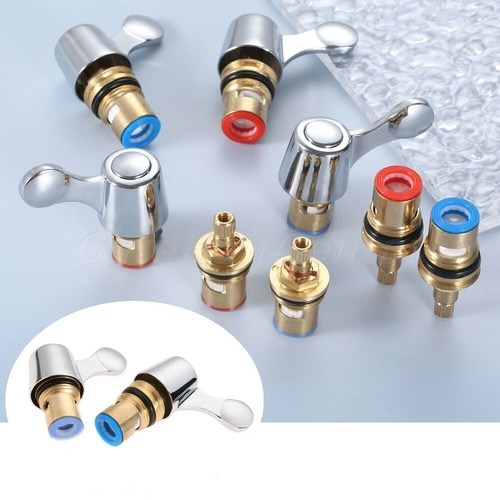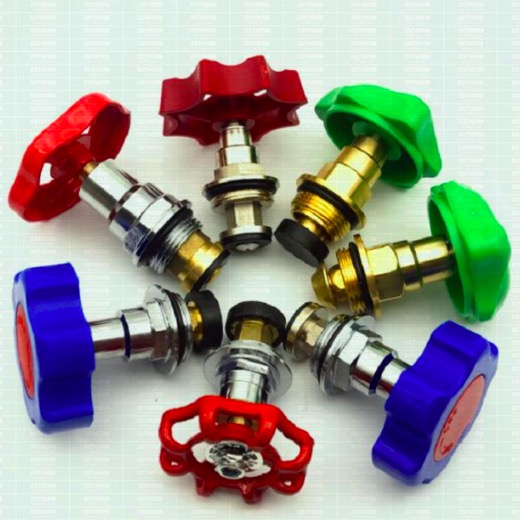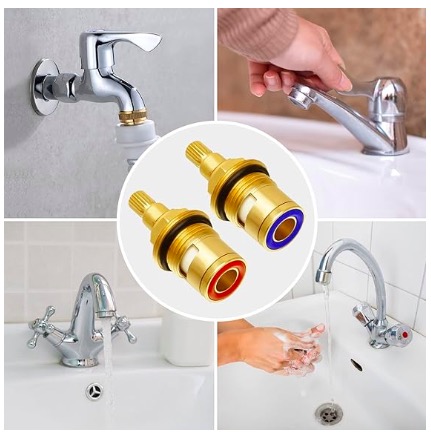A dripping tap, a stiff handle, or inconsistent flow usually comes down to one small hidden part: the cartridge. Many buyers ignore it until it causes problems.
A brass ceramic cartridge is the core valve unit inside a tap that controls flow and temperature using two ceramic discs, giving smooth operation and long-lasting leak prevention.
When I work with clients who is buying faucets, one of the most common issues I see is a misunderstanding of cartridges. Knowing how they work, how long they last, and the difference in materials helps buyers make better choices.
What is a ceramic cartridge in a tap?
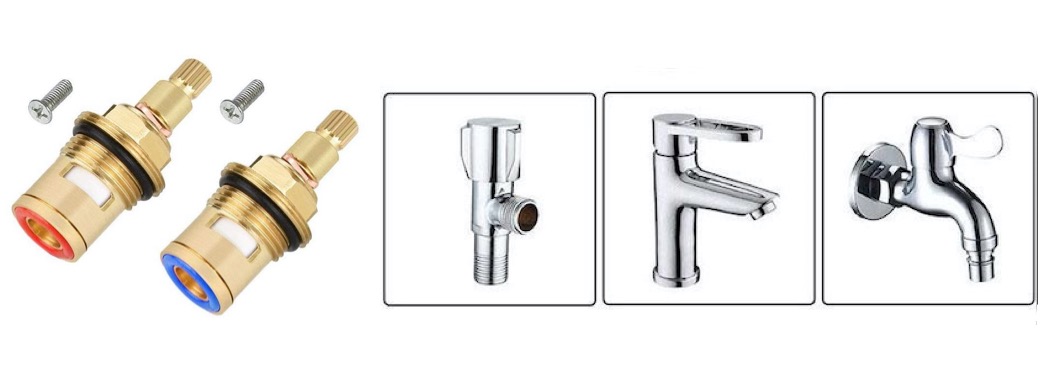
Ceramic Cartridge in Tap
A tap may look simple outside, but inside is a precision mechanism.
A ceramic cartridge in a tap is a replaceable valve that uses two ceramic discs to open, close, and mix water, replacing the older rubber washer1 system.
One disc stays fixed, the other moves with the handle. When the holes line up, water flows. When they close, water stops. The surface of the discs is polished so precisely that water cannot pass through when shut.
Why ceramic cartridges matter
- Provide smooth handle movement
- Mix hot and cold water accurately
- Prevent leaks for years
- Require less maintenance than rubber washers
I remember working with a client who sold bathroom fittings in hotels. They had constant complaints about dripping taps with rubber washers. After switching to ceramic cartridges, complaints disappeared, and their customer satisfaction improved. That shows the impact of this small part.
What does a ceramic cartridge do?
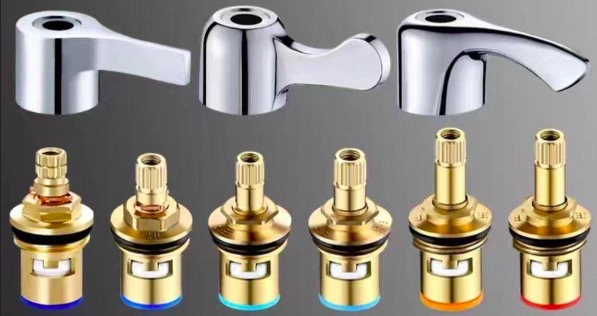
Brass Ceramic Cartridge function
Without a cartridge, a tap cannot work at all.
A ceramic cartridge controls the water flow and temperature inside a tap through two interlocking ceramic discs that create a perfect seal.
The design is simple but powerful. When you turn the handle, the top disc moves, adjusting both water flow and the mix of hot and cold. Because ceramic is hard and smooth, it creates a tight seal with very little wear.
Main functions
| Function | Description |
|---|---|
| Flow control | Opens or closes water by aligning holes |
| Temperature control | Mixes hot and cold water proportion |
| Leak prevention | Disc surfaces seal water with zero gap |
| Smooth operation | Polished discs move with little resistance |
In one factory I visited, we tested ceramic cartridges up to 500,000 open-close cycles. They still worked smoothly. This kind of endurance is the main reason why modern taps use ceramic instead of rubber washers.
Buyer benefits
- Fewer returns and complaints
- Longer product lifespan
- More premium feel to tap handles
- Better water control in daily use
How long do ceramic tap cartridges last?
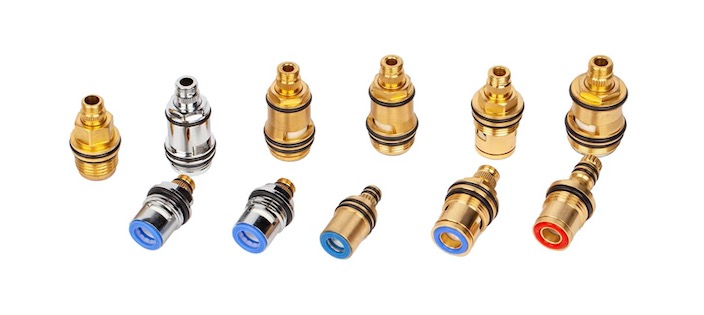
Brass Ceramic Cartridge Lifespan
Many buyers ask me: how long can a cartridge last?
On average, a ceramic tap cartridge lasts 5–10 years in normal conditions, but high-grade models can last 15–20 years if water quality is good.
Durability depends on several things: water hardness, cartridge quality, and how often the tap is used. In areas with hard water, limescale builds up and wears the discs faster. Low-quality cartridges also fail much sooner.
Factors that affect lifespan
- Water hardness and scale buildup
- Cartridge quality and sealing material
- Daily usage level (home vs hotel vs public)
- Correct installation and maintenance
I once had a client in Northern Europe who needed to replace hotel tap cartridges every 3 years. After switching to anti-scale treated ceramic cartridges, the lifespan increased to over 8 years. This reduced replacement costs and improved guest satisfaction.
Lifespan expectations
| Cartridge type | Average lifespan |
|---|---|
| Basic economy cartridge | 3–5 years |
| Standard residential | 5–10 years |
| Premium high-grade | 10–20 years |
| Anti-scale treated | 8–15 years in hard water |
To maximize lifespan, I always suggest sourcing from reliable suppliers, checking cartridge seals, and advising end-users to use filters in hard-water regions.
Brass Ceramic Cartridge VS Plastic Ceramic Cartridge
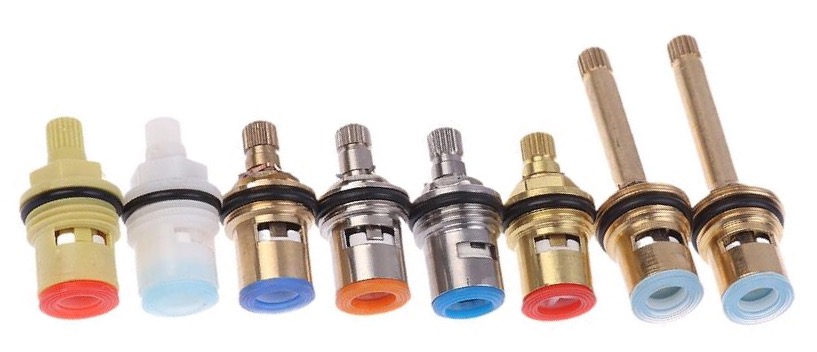
Brass vs Plastic Cartridge
One key decision buyers face is material choice: brass or plastic.
Brass ceramic cartridges are stronger and more durable, while plastic ceramic cartridges are lighter and cheaper but less resistant to high pressure and long-term wear.
This difference affects both cost and performance. Brass has been the traditional choice for premium taps, while plastic is often used in budget products.
Comparison table
| Feature | Brass Ceramic Cartridge | Plastic Ceramic Cartridge |
|---|---|---|
| Durability | High, resists pressure and heat | Lower, can deform over time |
| Cost | Higher | Lower |
| Corrosion resistance | Good, even better with plating | Resistant to rust but weaker |
| Application | Premium, high-use installations | Budget, light residential use |
| Lifespan | 10–20 years | 3–8 years |
I once had a Canadian buyer who insisted on using plastic cartridges to save costs. After two years, customer complaints increased because cartridges failed early. The brand’s reputation suffered. Later, he shifted to brass cartridges for his main product line and positioned plastic cartridges only for entry-level taps. That balance helped him keep both budget and premium customers.
Key takeaway
- Choose brass ceramic cartridges for durability, hotels, and high-use systems.
- Choose plastic ceramic cartridges for cost-sensitive, low-use applications.
The material directly affects performance, so this is not a place to cut corners when quality is important.
A ceramic cartridge is the heart of every modern tap. It controls water flow, prevents leaks, and defines the product’s lifespan. Choosing between brass and plastic cartridges depends on your market and customer needs.
-
Discover why rubber washers can lead to issues like leaks and maintenance problems compared to ceramic cartridges. ↩



